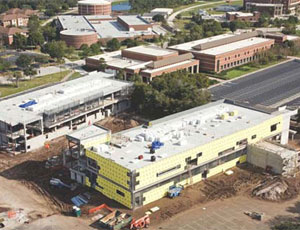Reduced Operating Expenses
Attaining LEED certification is not just a matter of using sustainable materials. A LEED project requires a commissioning agent as a member of the team. Utah New Vision Construction, Mt. Pleasant, Utah, was there to ensure the work was done properly and as proposed.

In addition to the commissioning agent’s expertise, many of MHTN’s architects are LEED-accredited professionals. “We understand that a LEED project is more cost effective from a lifecycle and performance perspective,” Taft says. “As a result of a LEED-rated design, we expected to see long-term benefits in reduced operational costs.” Since the project’s completion, the firm has seen significant reductions in its annual operational costs.
Some of that savings is the result of reduced electricity usage, partially due to new lighting fixtures and motion sensors that turn off power in unoccupied areas. “Only the most active spaces get light,” says MHTN President Peggy McDonough, “and the natural-light level triggers when artificial light is needed.”
To maximize natural light, reflective ceiling tiles and countertop surfaces were used. Almost every work area has access to some daylight. Studio “town centers” contribute to the openness that allows for more efficient use of daylight. These town centers also encourage collaboration among the staff.
In addition to improved indoor environmental quality and energy savings, plumbing fixtures were replaced with low-flow faucets, waterless urinals and other no- or ultra-low-water use items. This reduced the project’s use of potable water by more than 45%, Nielsen says. A dishwasher was also installed in the break room to eliminate the use of plastic bottles.
All these changes contributed to the LEED-Gold certification. “You set yourself a goal you want to achieve and then push yourself every way to achieve that,” Nielsen says. “We looked for ways to reuse everything we could.” Reaching their LEED goal meant recycling 75% of the construction waste.
A lot of the casework and cabinets were reused and refaced, and new ones were built out of renewable materials. These types of materials, and low- or non-VOC materials, also contributed to better indoor-air quality.
Today, MHTN’s 29,000-sq-ft remodeled office reflects the firm’s passion for architecture and its commitment to sustainability.

Post a comment to this article
Report Abusive Comment